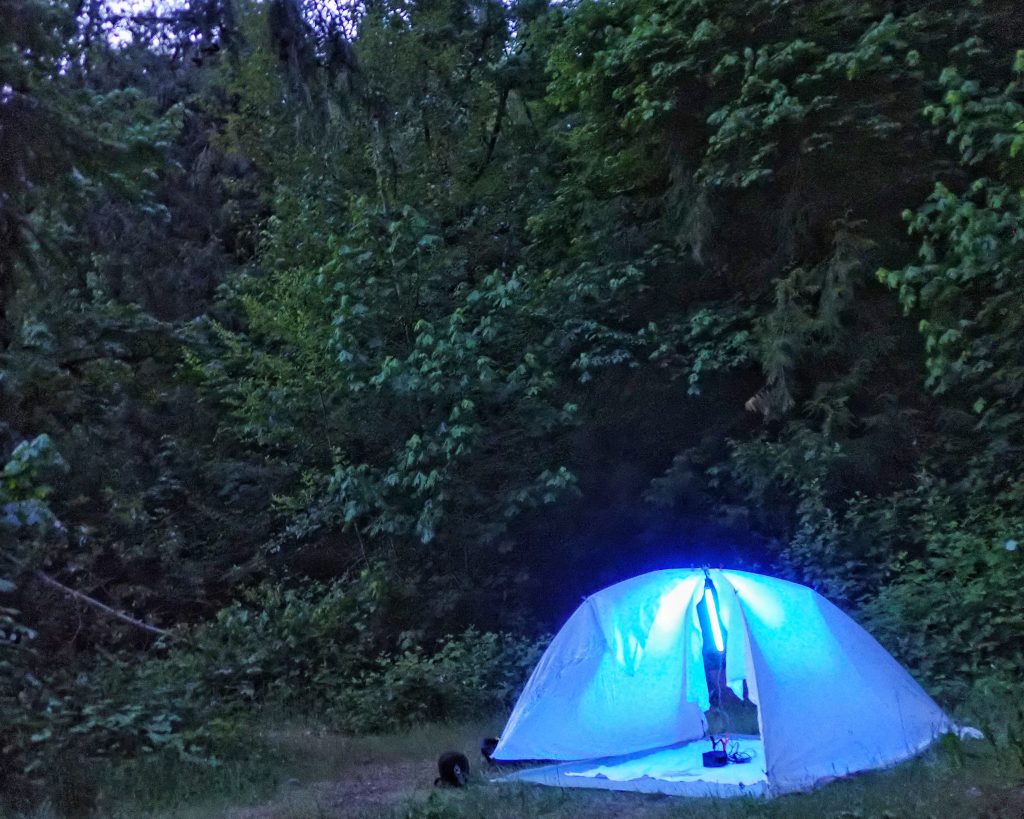
On Tuesday, June 6th, I finally made it up to Canyon Creek, in nw Clark County, Washington, for an evening of UV aided bug hunting. My plan had been to do a substantial bit of road walking, looking for any arthropods that might be available, and confirming some identifications of plants I’d found the last time I was up there. Then I figured I’d do some fishing till dark, and subsequently set up my lights. However, the combination of my planned sleeping in (so as to be alert until the wee hours of the morning), and my desire to finish the Cheiracanthium mildei profile so as not to break my streak of consecutive days posted (20 with that profile), meant I got a very late start and didn’t get up to the creek area until almost 5.
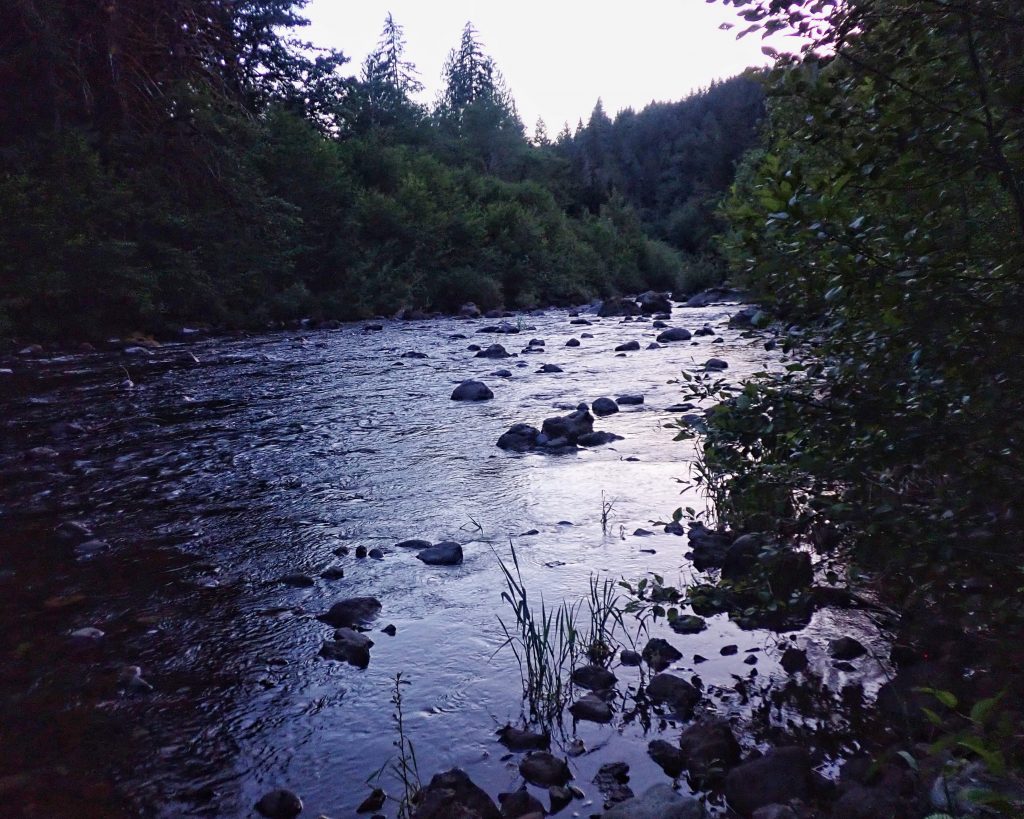
It was a very warm afternoon (89⁰ on my thermometer) and I started sweating immediately upon exiting my air conditioned van. I was glad that I had finally realized that there was no particular reason to carry any technical identification manual other than the 2nd edition of “Flora of the Pacific Northwest “ (2018), because Hitchcock et al would tell me all of the salient details I needed to note, and it covers everything I’m liable to find on any day trip I’ll be making. I love the simplicity of Kozloff’s keys in “Plants of Western Oregon, Washington, & British Columbia”, but it is not as comprehensive and the taxonomy is dated. I also love “Flora of Oregon” because the keys sometime highlight different characteristics, but even once Vol. 3 is published and it is more comprehensive, that is a lot of weight to pack around. I still usually carry Turner and Gustafson’s “Wildflowers of the Pacific Northwest”, because it is a sweet book, but I have finally learned that I cannot rely on it for a positive identification.
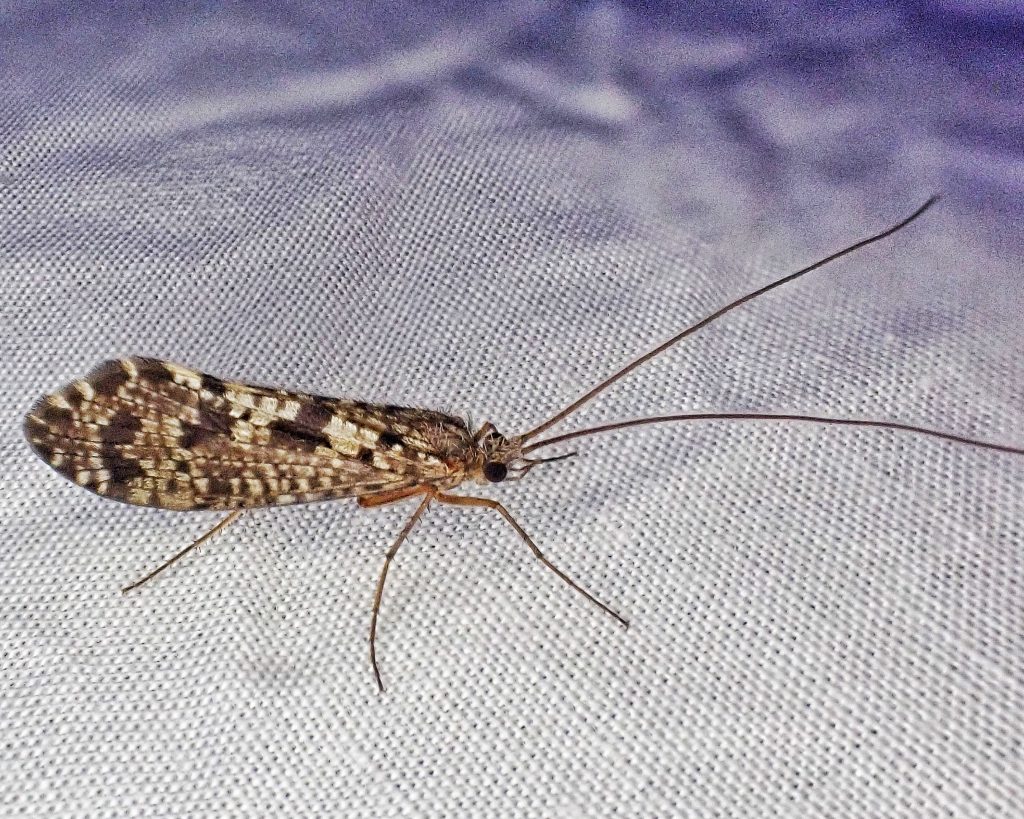
Cutting down the weight in my pack meant that I was ready to take my little folding, three-legged stool along on serious botanical excursions, and I was thrilled to discover that I could clip it to my pack in such a way that I could leave it attached to the pack when it was in use. In fact the whole equipment system I utilized that day worked so well that I can foresee myself actually doing many more methodical and serious botanical excursions, wherein I stop and make a positive identification of every plant that I’m not already absolutely certain of along my given path. Or at least that is the current fantasy.
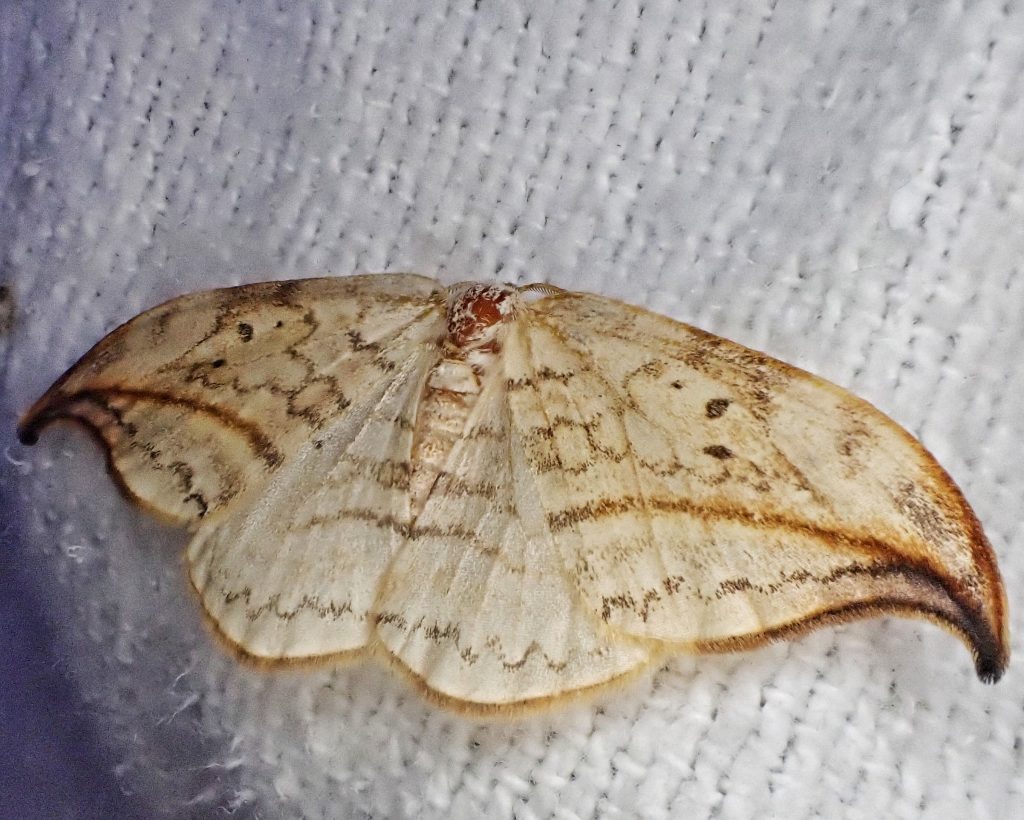
So I walked slowly along the road, the insect net I was also carrying going mostly unused because it was even too hot for the bugs to be very active. I was a bit disappointed that some of the flowers I had photographed only a week before were already done blooming for the year, but did make a positive identification of the Lathyrus polyphyllus I profiled yesterday, and a few more plants and shrubs I’ll be profiling in the coming days, such as Ceanothus sanguineus, Anemone deltoidea, Veronica americana, Nemophila parviflora, Rubus ursinus, and devil’s club (Oplopanax horridus), which I’ve actually been able to identify for almost fifty years after my first horrible encounters with it as a newcomer to the PNW in my teens, but which I hadn’t found in bloom since beginning this project.
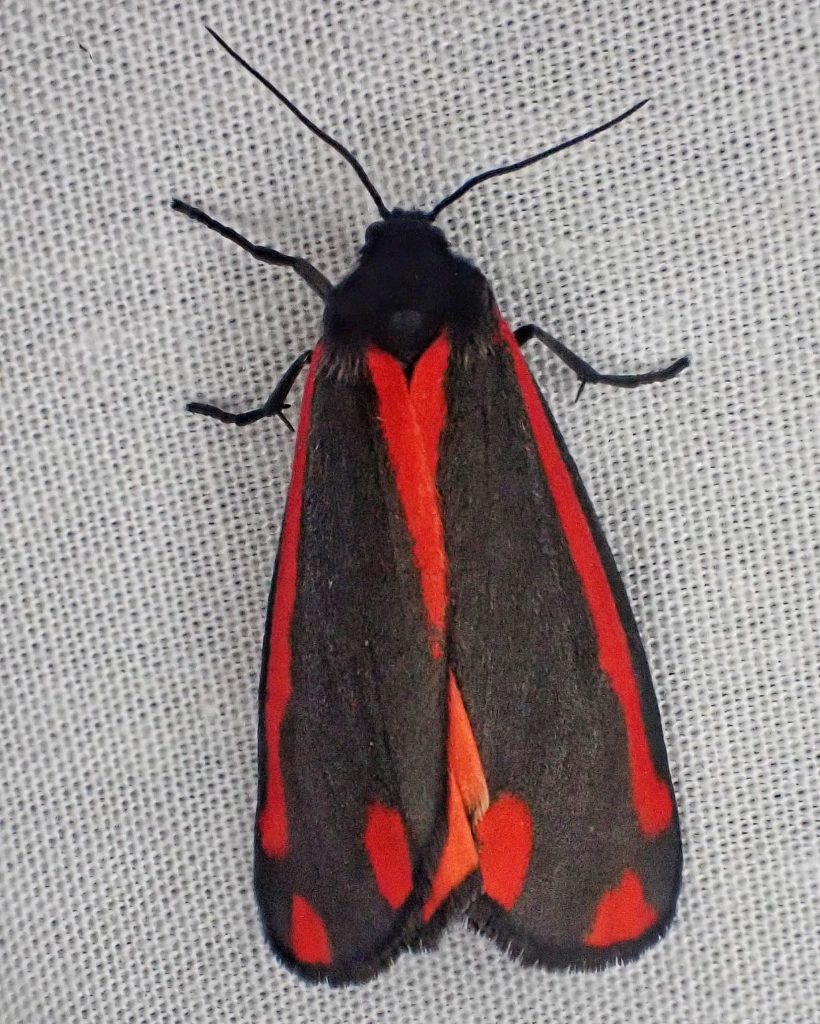
Even though I try to focus my attention on the opposite side of the road/trail on the return trip of an out-and-back pathway, my attention often flags when heading back to the van, and I don’t often find species of plants that I haven’t already seen that day. But I do become more alert to the movements of bugs, and I was particularly grateful on this day to spot the butt down pose of a flying beetle, and to successfully net it, because it turned out to be the first Sinodendron rugosum (rugose stag beetle) I’d ever found, which is one of the more prehistoric and cool looking beetles I’ve ever seen.
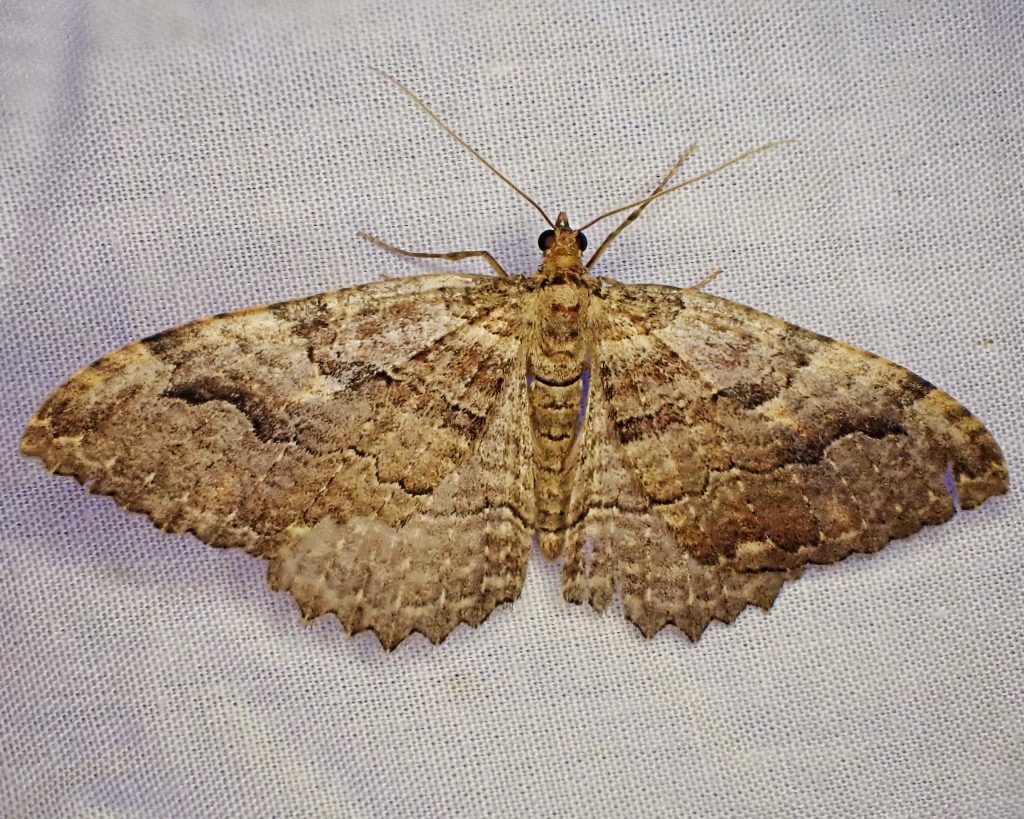
By this time I realized I needed to pick up the pace if I wanted to get my lights set up by sundown, so I walked with a bit more directedness back to the van, and then drove to the appointed pullout. I was happy to notice that there wasn’t even a fisherman parked there, let alone the party ready folks that I had worried about, since there was a small clearing on the flat area between the hillside and the creek that had obviously been used for that purpose before, and which seemed like a likely spot for attracting moths. A few days prior, during my search for the missing mothing setup, I found a relatively small duffel bag that seemed like it might be large enough to hold the accoutrements of a complete lighting structure/system, and when that proved to be the case I had loaded it up with poles, ground cloth, sheets, stakes, battery and the UV light. It only weighs about 15 pounds fully loaded, so is eminently portable, and does not betray my intentions to anyone who may observe me carrying it. This will allow me to easily run lights at some distance from the van, and will be a boon to mothing privately.
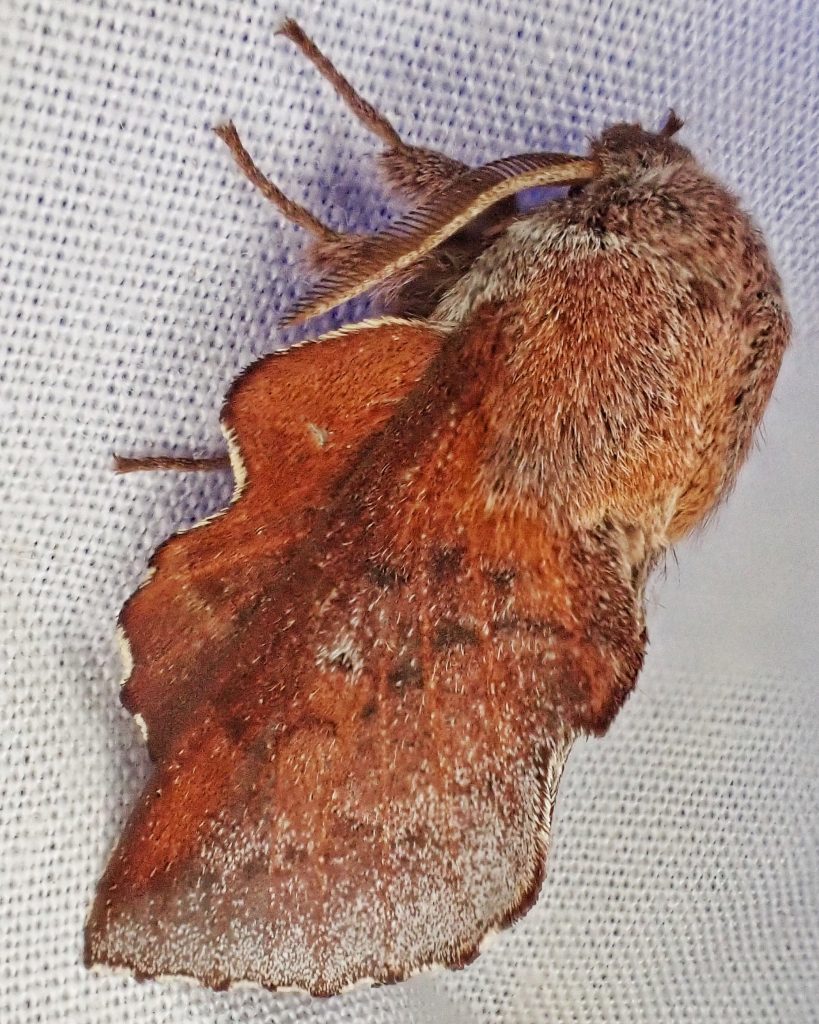
When I got finished setting up it was just before 9 (sunset was said to be 8:57) and the temperature had dropped to 76⁰, but fishing had once again lost out to bugs and botany. Almost immediately some small Diptera landed on my sheets, as well as some undistinguished caddisflies and micro moths. One thing I had failed to bring down to the clearing was a chair, and I’m no longer a fan of sitting on the ground, so I hoofed it back up the hundred yard trail to the van, and got a more comfortable folding chair than my 3 legged stool, as well as some extra batteries for my headlamp. It was now dark enough in the forest for the headlamp to be of use, but by the time I got to the setup it still hadn’t attracted anything of particular interest to me. At some point I intend to try to get a handle on drab micro moths, caddisflies, and even tiny Diptera, but I’m not that desperate for new identification challenges yet, barely having come to terms with the ones I have taken on.
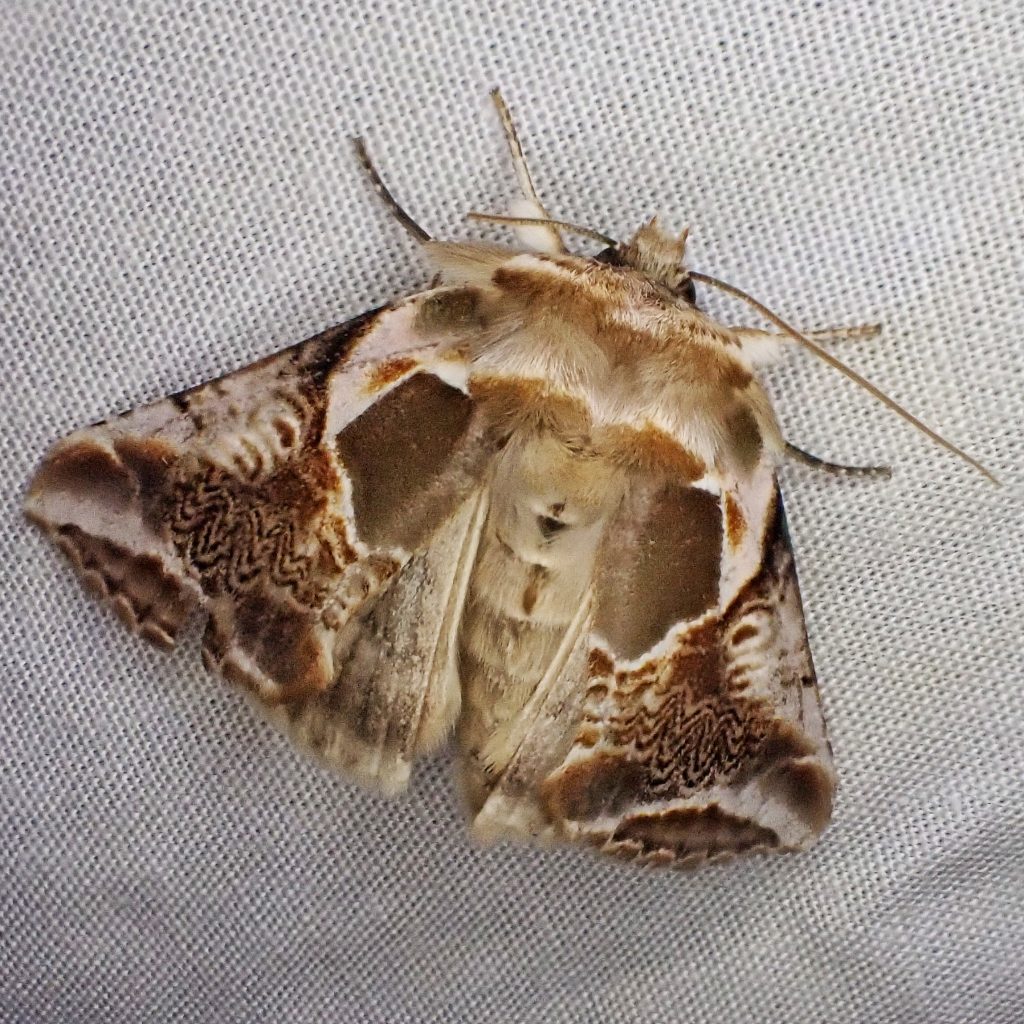
The first macro moth to show up was a Zosteropoda hirtipes (V-lined Quaker moth), but though I knew I’d seen and identified them before I couldn’t remember their name. In fact I was disappointed with the amount of rust on my brain, because I couldn’t remember the names of at least half of the familiar moths that showed up that night. And there were plenty of old friends (these photos are mostly the old friends whose names I remembered), although most of them I haven’t yet profiled, as well as quite a few that were new to me.
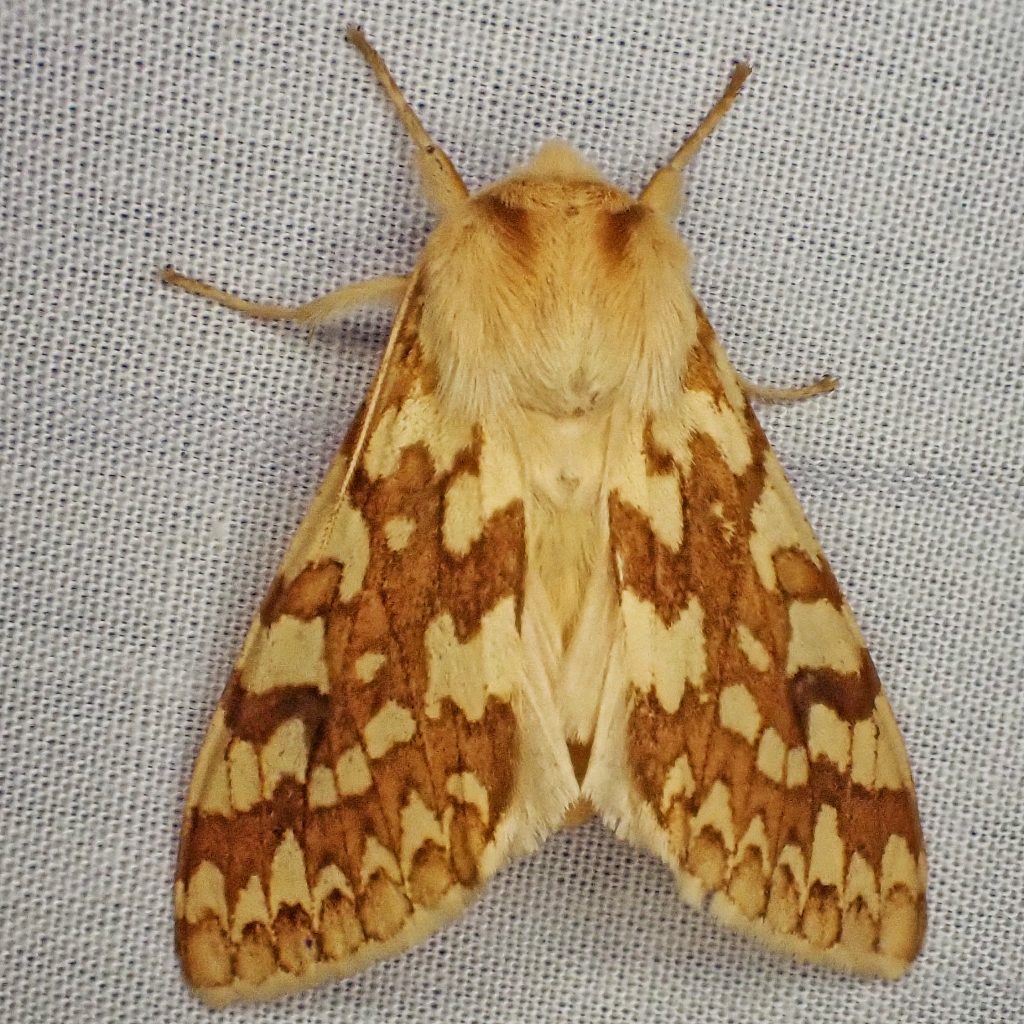
The night was very pleasant, with virtually no wind, and I was quite comfortable in shirt sleeves, though by the time I started tearing down the setup at 1:30 am the temperature had dropped to 57⁰, and I was glad for the warming of exertion. The skies were clear, and when I allowed my eyes to adjust I could see a plethora of stars, though being in the bottom of a canyon I could only see about 90⁰ of sky. Though the moon was only 4 days past full, it provided no competition for my lights, since it didn’t peak over the ridge to the southeast of me until I was starting to walk out around 2.
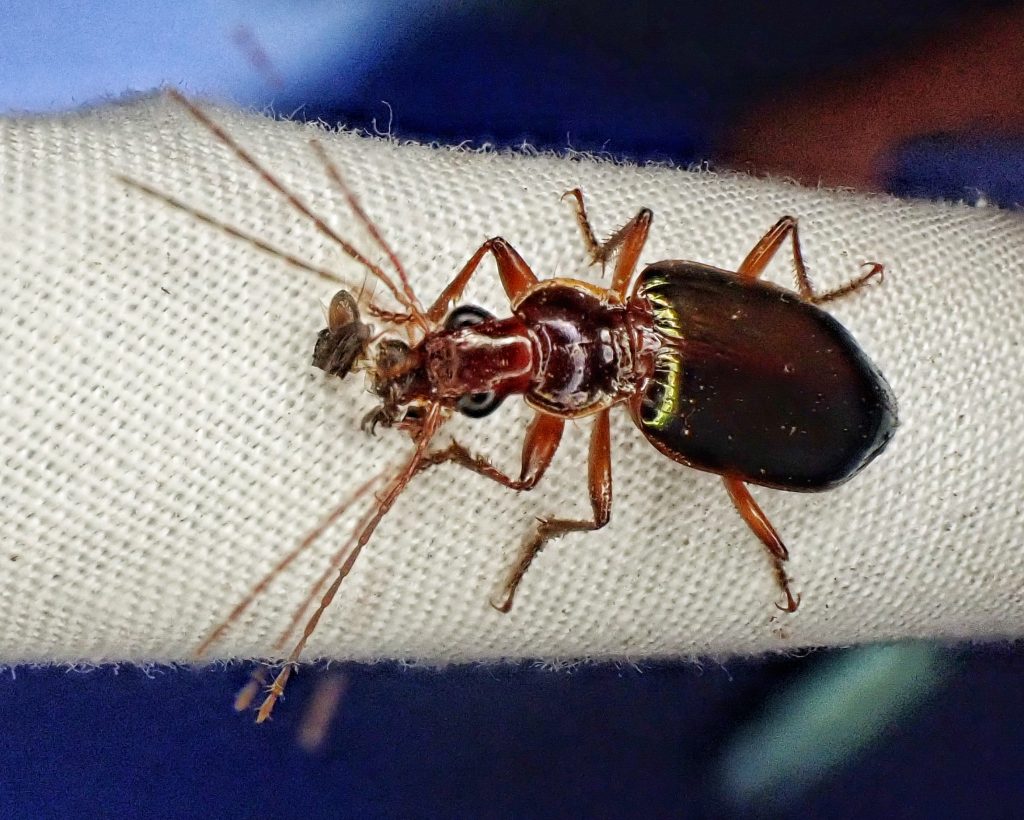
Bugs came in steadily to the lights until well after midnight. I still haven’t organized all of my photos, but it looks like I had around 30 different species of macro moths, as well as at least 4 species of beetles (including, I think, another Podabrus conspiratus, and some that were different species of Podabrus). It was busy enough that moths were flying into my face and ears, and down the neck of my shirt. I’m sure there are many folks who would find this annoying, but, knowing they are harmless, I kind of enjoy it, because it means my system is working, and gives me an illusory sense that I am some sort of entomologist.
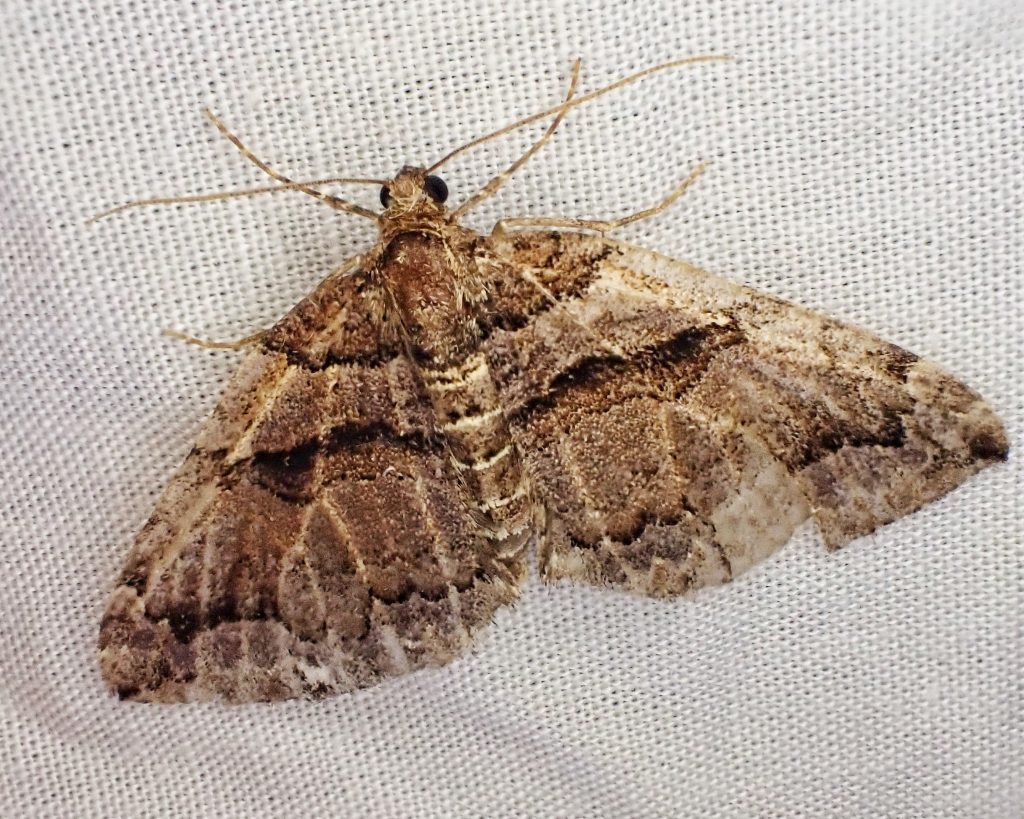
After noticing how abraded my knees were after crawling around on my previous moth lighting adventure, I finally broke down and bought some knee pads. I spend a lot of time on my knees during a typical evening of buglighting, and it’s hard enough for me to keep steady while I am trying to photograph my subjects, without adding stabbing patellar pains to the process. The first time I dropped to my knees during last Tuesday’s bug pursuit, trying to photograph that Zosteropoda hirtipes, I mentally braced for the pain, and was so relieved when it didn’t come that I laughed out loud, although I followed that with a mental castigation of the stubborn machismo crap that had left me suffering needlessly for years. It turns out that knee pads are one of the wiser $20 expenditures I’ve made in recent years.
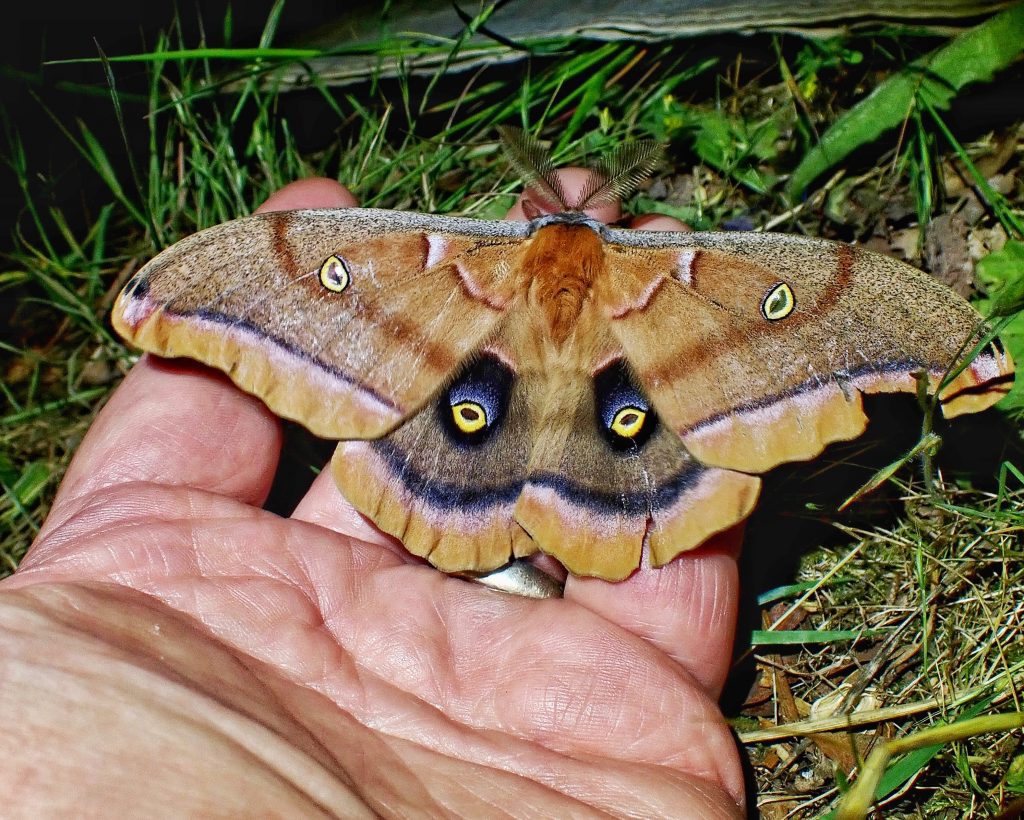
When I finally concluded that invertebrate traffic had slowed to a trickle, I gathered up the chair (which I was grateful to have, even though I probably spent no more than a half an hour total suspended in its embrace) and hauled it back to the van. As I was returning to break down the lights I noticed a large shadow banging up against the outside of the sheets, and sure enough it was one of the huge Polyphemus moths (Antheraea polyphemus ). They are known to be a moth that flies later in the night than many others, or at least shows up at lights when things are slowing down. They are also kind of bumblers, who bounce off the sheets and the light itself repeatedly, taking a long while to settle down. So I just stood and watched as, for about 10 minutes, this large, beautiful, wonderful moth flew into and around my setup, before it finally settled down near my feet. Curious as to what would happen, and really mostly just wanting a physical connection with this glorious creature, I knelt down and worked my fingers under the grass it was perched upon. And it climbed right on to my hand! It was an awe-some feeling to have its fuzzy legs and feet on my fingers, and I felt blessed and very happy to be alive. Some indeterminate time later I set it on my gear bag (so I wouldn’t accidentally step on it) and started tearing down the setup. And but a few minutes later I heard a rustle of wings near my ear, and then it landed on the inside of my forearm. This time I waited for it to fly away on its own, feeling honored by its presence and trust. When it did leave I immediately shut down the UV light, so that it wouldn’t feel its pull, and quickly finished packing up. Though I know intellectually that it’s ridiculous to anthropomorphize these kind of events, at that moment I couldn’t help feeling like I was more of a welcome guest at these moth’s light party, rather than an interloper crashing their soirée.
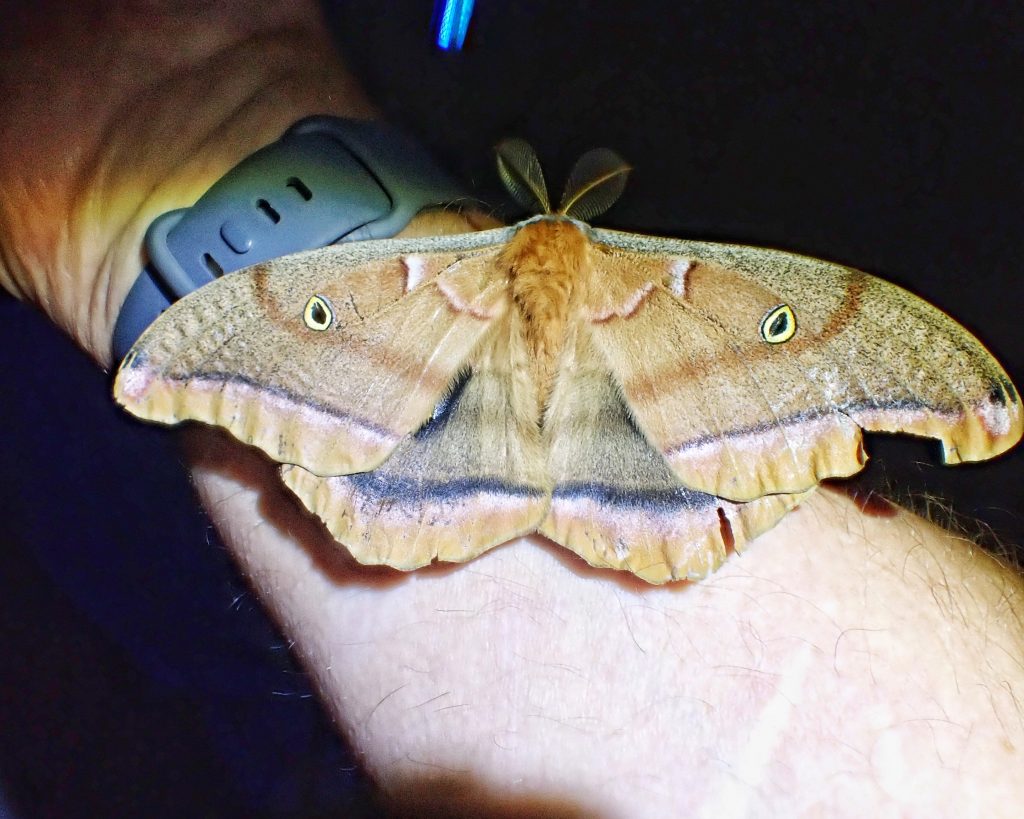
Wonderful!
Thank you, Sharon!
What an adventure and how fun it must have been Dan! Nicely done. I’m really enjoying your posts about what you find.
Thanks, Cynthia! Changing the form of the profiles has not only made it easier to get them out, it has freed up time to do more fun writing about my trips.
Wow, what a post–one of your best.
Thank you so much for saying that, David!